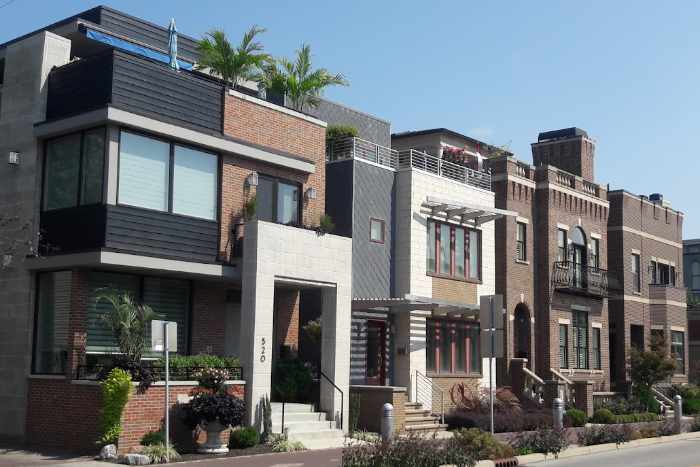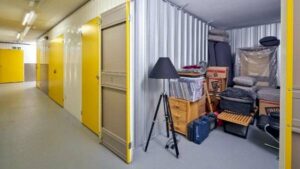Student housing trends have undergone significant transformation in the ever-evolving world of education, reflecting not only changing preferences but also an acknowledgment of modern student needs. Gone are the days of traditional dormitories with basic amenities; now, students desire a more tailored accommodation experience that caters more precisely to them. As education progresses, so does student housing.

Student Housing Trends
Student housing has dramatically evolved along with the changing education environment and preferences of contemporary students. What once consisted of dormitories and shared facilities has since blossomed into a range of living arrangements designed to meet diverse student needs and aspirations. Let’s examine some of these trends that define modern student accommodation.
A Shift Towards Diverse Living Arrangements
One of the noticeable shifts in student housing is the rise of diverse living arrangements. While traditional dormitories persist, there’s a burgeoning demand for alternative options such as apartment-style housing, co-living spaces, and even off-campus accommodation. Students seek environments that foster independence, privacy, and community, blurring the lines between living and learning spaces.
Enhanced Safety and Security Measures
In an era marked by heightened awareness of safety and security, student housing trends emphasize the implementation of robust safety measures. Accommodation providers are investing in state-of-the-art security systems, secure access control, and 24/7 surveillance to ensure the safety and well-being of students. Additionally, pandemic-induced concerns have led to an increased focus on health protocols and sanitation measures within student residences, ensuring a safe and hygienic living environment.
Embracing Cultural Diversity and Inclusivity
Today’s student housing trends also reflect a growing emphasis on cultural diversity and inclusivity. Accommodation providers are striving to create environments that celebrate diversity, foster inclusion, and respect different cultural backgrounds. Initiatives such as cultural exchange programs, inclusive events, and accommodation designs sensitive to diverse needs aim to create welcoming spaces where students from various cultural backgrounds feel valued and represented.
Embracing Technology and Connectivity
Technology has become an integral part of student life, and housing trends have adapted accordingly. Today’s student residences are equipped with high-speed internet, smart home features, and communal spaces designed for collaborative and remote learning. Students can easily access writing services, enhancing their writing skills conveniently while residing on campus. This seamless accessibility empowers students to refine their academic capabilities within their living environment. They just should keep in mind to read nerdify reviews before using the service to ensure it meets their expectations. The integration of technology aims to create an environment conducive to both academic pursuits and social connectivity.
Global Connectivity and Remote Learning Spaces
The recent shift towards remote and hybrid learning has influenced student housing trends by fostering the creation of global connectivity hubs within accommodations. These spaces offer advanced technological infrastructure, video conferencing facilities, and access to virtual learning resources, enabling residents to seamlessly connect with global peers, attend virtual lectures, and participate in collaborative projects regardless of geographical boundaries.
Innovative Design Concepts
Modern student accommodations are witnessing a surge in innovative design concepts that reimagine living spaces. From modular furniture that maximizes space to convertible living areas that adapt to varying needs, the focus is on creating multifunctional environments. Some residences experiment with adaptable room layouts, allowing residents to configure their living spaces according to changing requirements, fostering creativity and flexibility within the living space. Then there are those apartment living essentials that every student space needs.
Focus on Wellness and Sustainability
A notable trend in modern student housing revolves around promoting wellness and sustainability. Living spaces are being designed to prioritize mental and physical health, offering amenities like fitness centers, green spaces, and wellness programs. Additionally, there’s a growing emphasis on sustainable living, with eco-friendly buildings, recycling initiatives, and energy-efficient utilities becoming standard features.
Customization and Flexibility
Students increasingly value flexibility in their housing arrangements. The demand for customizable spaces that adapt to individual preferences is on the rise. Flexible lease terms, furnished or unfurnished options, and the ability to personalize living spaces are becoming key considerations for students seeking accommodation.
Collaborative and Community-Oriented Spaces
Today’s students crave a sense of community and opportunities for collaboration. Common areas within student housing facilities are evolving into vibrant hubs that encourage social interaction, group studying, and cultural exchange. Co-working spaces, communal kitchens, and organized events foster a sense of belonging among residents.
Addressing Affordability and Accessibility
Amidst the evolution of student housing, affordability remains a critical concern. Many students seek housing options that strike a balance between cost-effectiveness and quality. As a result, there’s a growing trend toward innovative solutions like micro-apartments, shared housing models, and public-private partnerships aimed at providing accessible and reasonably priced accommodation.
Conclusion: Adapting to the Future
The shifting landscape of student housing reflects a deeper understanding of the evolving needs and aspirations of today’s students. From embracing technological advancements to prioritizing wellness, sustainability, and community, the trends in student housing are steering towards creating holistic living experiences that complement the educational journey.
As educational institutions and housing providers continue to adapt to these changing trends, the focus remains on crafting living spaces that not only serve as a shelter but also contribute significantly to the overall growth, well-being, and success of the modern-day student.
On a related topic, we also have 6 Ways for Students to Decorate Your Home on a Tight Budget that may interest you.



